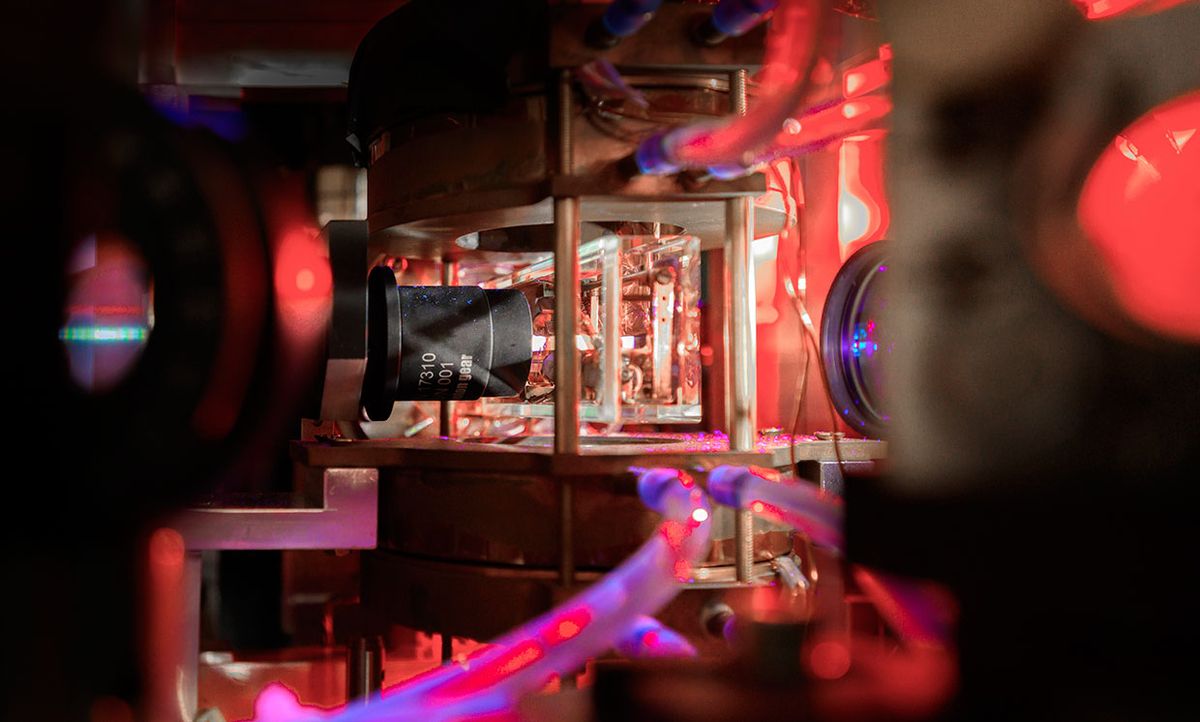A team of German researchers has stretched the distance quantum information can travel from stationary quantum memory to optical telecom pulse. The group’s new experiment transfers the information contained in a single quantum bit from an atomic state to a single photon, then sends it through some 20 kilometers of fiber optic cable.
This finding begins to extend the distance over which quantum systems (including quantum computers and quantum communications hubs) can be physically separated while still remaining connected. It also serves as a milestone on the road toward a so-called quantum repeater, which would broadly expand the footprint of quantum technologies toward regional, national, or even international connectivity.
“One of the grand goals is a quantum network, which then would link together different quantum computers,” says Harald Weinfurter, professor of physics at Ludwig Maximilian University of Munich, Germany. “And if we can establish entanglement between many such segments, then we can link all the segments together. And then link, in an efficient manner, two atoms over a really long distance.”
The researchers, who reported their findings in a recent issue of the journal Physical Review Letters, have only one-half of a full-fledged communications system from one stationary qubit to another.
Weinfurter noted that, to complete such a quantum communications channel, the team would have to also complete the process in reverse. So, the data in an individual qubit would be transferred to a photon, travel some distance, and then be transferred back to a single atom at the other end of the chain.
“At the end of the day it will work out; we are very positive,” says Weinfurter.
In the experiments reported in the paper, rubidium atoms were captured in a tabletop laser atom trap and cooled down to millionths of a degree above absolute zero. The researchers then picked out an individual atom from the rubidium atom cloud using optical tweezers (a focused laser beam that nudges atoms as if they’re being manipulated by physical tweezers).
They zapped the single atom, pushing it up to an excited state (actually two nearby energy states, separated by the spin state of the electron). The atom, in other words, exists in a quantum state that is both spin-up and spin-down versions of that excited state. When the atom decays, the polarization of the ensuing photon depends on the spin-up or -down nature of the excited state that produced it.
The next step involved trapping the polarized photon and converting it to a fiber optic S-band photon, which can travel through 20 km of fiber on average before being absorbed or attenuated. The researchers found they can preserve on average some 78 percent of the entanglement between the rubidium atom and the fiber optic photon.
The next challenge, says Weinfurter, is to build out the full atom-to-photon-to-atom quantum communication system within their lab. And then, from there, to actually physically separate one apparatus from another by roughly 20 km and try to make it all work.
As it happens, Weinfurter notes, the Max Planck Institute for Quantum Optics in Munich happens to be about 20 km from the team’s lab. “It’s good to have them that close.”
Then, as quantum computer makers today know all too well, the challenge of error correction will rear its head. As with quantum computer error correction, entanglement purification for a quantum communication system like this is not an easy challenge to overcome. But it’s a necessary step if present-day technologies are to be scaled up into a system that can transmit quantum entanglement from one stationary qubit to another at dozens or hundreds of kilometers distance or more.
“In the whole process, we lose the quality of the entangled states,” Weinfurter said. “Then we have to recover this. There are lots of proposals how to do this. But one has to implement it first.”
Margo Anderson is the news manager at IEEE Spectrum. She has a bachelor’s degree in physics and a master’s degree in astrophysics.



